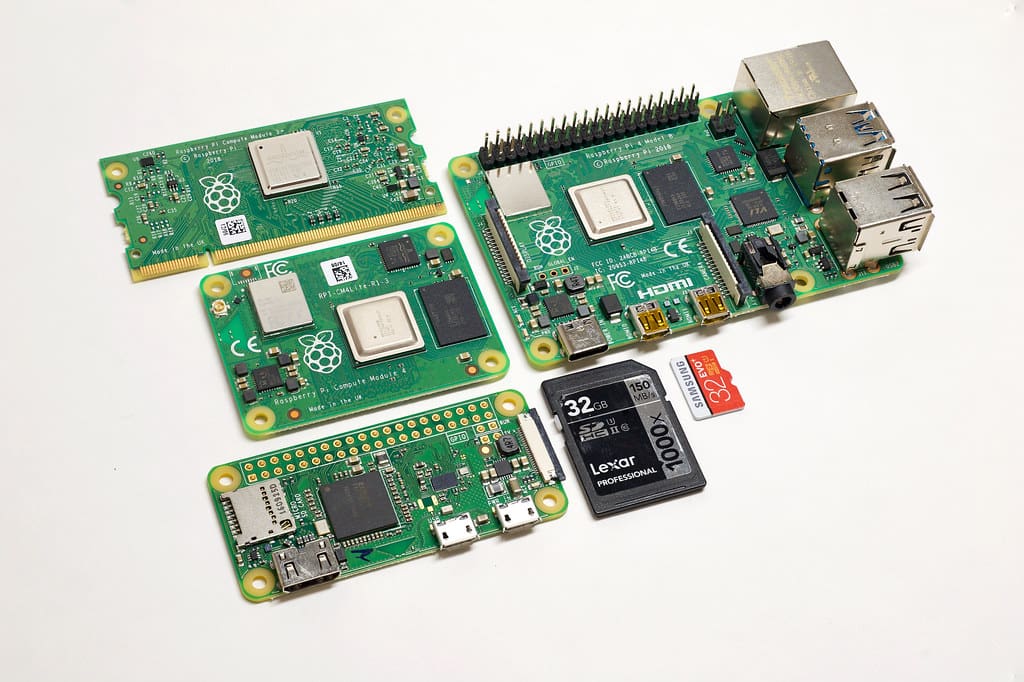Electric current is one of the most fundamental concepts in the study of electricity and electronics. It is the flow of electric charge through a conductor, such as a wire, and is responsible for powering almost every electrical device we use daily. Despite its importance, the concept of current can be somewhat abstract, especially for beginners. This guide aims to provide a clear and accessible introduction to electric current, explaining what it is, how it works, and why it is essential in the world of electronics.
What is Electric Current?
At its most basic level, electric current is the flow of electric charges. These charges are typically carried by electrons, which are negatively charged particles that move through a conductor. When a voltage is applied across a conductor, it creates an electric field that pushes these electrons, causing them to move from one end of the conductor to the other. This movement of electrons is what we refer to as an electric current.
Electric current is measured in amperes (A), a unit named after André-Marie Ampère, one of the pioneers in the study of electromagnetism. One ampere of current is equivalent to the flow of one coulomb of charge per second through a conductor. In practical terms, this means that a current of one ampere represents a substantial flow of electrons—about 6.242 x 10^18 electrons moving past a point in the circuit each second.
There are two main types of electric current: direct current (DC) and alternating current (AC). Direct current flows in one direction only, typically from the positive terminal to the negative terminal of a power source like a battery. Alternating current, on the other hand, periodically reverses direction. This is the type of current commonly used in household electricity, where the current changes direction 50 or 60 times per second, depending on the country.
How Electric Current Flows
To understand how electric current flows, it’s helpful to use the analogy of water flowing through a pipe. In this analogy, the water represents the electric charge, the pipe represents the conductor, and the pressure driving the water through the pipe represents the voltage. Just as water flows from an area of high pressure to an area of low pressure, electric current flows from a point of high electric potential (voltage) to a point of low electric potential.
The flow of current depends on several factors, including the voltage applied across the conductor, the resistance of the conductor, and the nature of the material through which the current is flowing. Voltage, as mentioned earlier, is the driving force that pushes the electrons through the conductor. The higher the voltage, the greater the force pushing the electrons, and the stronger the current.
Resistance, measured in ohms (Ω), is the opposition to the flow of current within the conductor. Different materials have different resistances; for example, copper has low resistance and is therefore an excellent conductor of electricity, while rubber has high resistance and acts as an insulator. According to Ohm’s Law, the current flowing through a conductor is directly proportional to the voltage applied and inversely proportional to the resistance: I=V / R, where I is the current, V is the voltage, and R is the resistance.
In practical terms, this means that for a given voltage, increasing the resistance will reduce the current, while decreasing the resistance will increase the current. For instance, if you increase the thickness of a wire (reducing its resistance), more current will flow for the same applied voltage. Conversely, if you increase the length of the wire (increasing its resistance), less current will flow.
Measuring Electric Current
Measuring electric current is a crucial aspect of working with electronic circuits, whether for troubleshooting, testing, or designing new systems. The most common tool for measuring current is the ammeter, which is connected in series with the circuit so that the current flows through the meter. Ammeters are designed to have very low resistance to avoid significantly affecting the current being measured.
In digital circuits, where current levels are often very low, milliamp meters or microamp meters are used to measure current in milliamperes (mA) or microamperes (µA), respectively. These more sensitive instruments are essential for accurately measuring the small currents that drive modern electronic devices.
Another important tool for measuring current, especially in high-power circuits, is the clamp meter. Unlike an ammeter, a clamp meter measures current without needing to make direct contact with the circuit. Instead, it uses a magnetic sensor to detect the magnetic field generated by the flowing current. This method is particularly useful for measuring current in situations where it is not practical or safe to break the circuit.
In addition to measuring the current itself, it is often necessary to measure related quantities such as the current’s direction and waveform. For example, in AC circuits, the current’s direction changes periodically, and the waveform can be visualized using an oscilloscope. The oscilloscope displays the current as a waveform on a screen, showing how it varies over time. This is particularly important in applications like signal processing, where the shape of the current’s waveform carries critical information.
The Importance of Electric Current in Circuits
Electric current is the lifeblood of any electronic circuit. Without it, the circuit would be lifeless, incapable of performing any function. In every electronic device, from a simple flashlight to a sophisticated computer, current is what powers the components, allowing them to perform their intended tasks.
For example, in a simple circuit with a battery and a light bulb, the current flows from the battery through the bulb’s filament, causing it to heat up and emit light. In more complex circuits, such as those found in computers, current flows through millions of tiny transistors, each acting as a switch or amplifier, enabling the processing and storage of data.
Understanding how current behaves in different types of circuits is essential for designing and troubleshooting electronics. In a series circuit, where components are connected end-to-end, the same current flows through each component. However, in a parallel circuit, where components are connected across the same two points, the total current is divided among the different paths.
The way current is distributed in a circuit has significant implications for its design and operation. For instance, in a series circuit, if one component fails and interrupts the flow of current, the entire circuit stops working. In contrast, in a parallel circuit, the failure of one component does not necessarily affect the others, as they each have their own path for the current to flow.
Types of Electric Current: DC vs. AC
Understanding the difference between direct current (DC) and alternating current (AC) is fundamental to grasping how various electrical systems operate. Both types of current are widely used, but they serve different purposes and have distinct characteristics.
Direct Current (DC) flows in one constant direction. This type of current is typically produced by batteries, solar cells, and DC generators. The steady flow of current in a single direction makes DC ideal for powering devices that require stable voltage and current, such as electronic circuits in computers, smartphones, and other digital devices. In a DC circuit, the voltage remains constant, which is why it’s preferred for sensitive electronics that need a stable power supply to function correctly.
One of the key advantages of DC is its simplicity and efficiency in circuits where the power source and load are close together. Because DC current does not change direction, it can be stored in batteries and used in portable devices. However, transmitting DC over long distances is less efficient than AC due to energy losses caused by resistance in the conductors.
Alternating Current (AC), on the other hand, periodically reverses direction, meaning that the current flows back and forth. The standard frequency of AC in most countries is either 50 Hz or 60 Hz, depending on the region. AC is generated by alternating current generators, commonly found in power plants, and is the form of electricity supplied to homes and businesses through the electrical grid.
The main advantage of AC is its efficiency in transmitting power over long distances. This is because AC voltage can be easily transformed to higher or lower levels using transformers. High-voltage AC is used for long-distance power transmission because it reduces the current, which in turn minimizes energy loss due to resistance. Once the electricity reaches its destination, it can be transformed down to safer, lower voltages for use in homes and businesses.
In electronic devices, AC is often converted to DC using rectifiers, which are components that allow current to flow in only one direction. This conversion is necessary because many electronic devices, especially those with sensitive circuits, require a stable DC supply.
The Role of Current in Power and Energy
Electric current is intrinsically linked to power and energy in electrical circuits. Power, measured in watts (W), is the rate at which energy is transferred or consumed in a circuit. The relationship between power, current, and voltage is given by the formula P= VI, where P is power, V is voltage, and I is current.
This equation highlights that the power consumed or delivered by a circuit is directly proportional to both the voltage across the circuit and the current flowing through it. For example, if a circuit has a voltage of 10 volts and a current of 2 amperes, the power consumption is P = 10×2 = 20 watts. This means the circuit consumes 20 joules of energy per second.
Understanding the power consumption of a circuit is crucial for designing systems that operate efficiently without overheating or drawing too much current, which could damage components. Engineers must consider the power ratings of all components in a circuit to ensure they can handle the expected current without failing.
Energy, on the other hand, is the total amount of work done by the circuit over time, and it is measured in joules (J) or kilowatt-hours (kWh) for larger scales. The energy consumed by a device is the product of power and time, given by the equation E=Pt, where E is energy, P is power, and t is time.
For instance, if a device consumes 100 watts of power and operates for 2 hours, the energy used is E=100×2=200 watt-hours or 0.2 kilowatt-hours. Understanding energy consumption is essential for managing electrical systems efficiently, particularly in applications like renewable energy, where minimizing energy waste is critical.
Safety Considerations with Electric Current
Electric current, while essential for powering our world, can be dangerous if not handled properly. Understanding the risks associated with electric current and implementing safety measures is crucial, both in industrial settings and in everyday life.
One of the primary dangers of electric current is electric shock, which occurs when current passes through the human body. The severity of an electric shock depends on the current’s magnitude, the path it takes through the body, the duration of exposure, and the body’s resistance. Even small currents can cause discomfort or injury, while larger currents can be fatal.
The threshold for perception of electric current is around 1 milliampere (mA), where a person might feel a slight tingling sensation. Currents above 10 mA can cause muscle contractions, making it difficult to let go of the source of the shock. Currents above 100 mA passing through the heart are likely to be lethal, as they can cause ventricular fibrillation, a life-threatening heart rhythm disturbance.
To prevent electric shock, it’s important to follow basic safety practices, such as:
- Insulation: Use insulating materials like rubber or plastic to cover wires and electrical components, preventing accidental contact with live conductors.
- Grounding: Grounding provides a safe path for excess current to flow directly into the earth, reducing the risk of electric shock. Grounded outlets and appliances have an additional wire connected to the earth, which helps protect users in case of a fault.
- Circuit Breakers and Fuses: These safety devices are designed to interrupt the flow of current in the event of an overload or short circuit, protecting both people and equipment. Circuit breakers can be reset, while fuses need to be replaced after they blow.
- Residual Current Devices (RCDs): Also known as Ground Fault Circuit Interrupters (GFCIs) in some regions, these devices detect small leaks of current to the ground and quickly shut off the power, reducing the risk of electric shock.
- Personal Protective Equipment (PPE): In industrial settings, electricians and engineers should wear appropriate PPE, such as insulated gloves, safety glasses, and protective clothing, to reduce the risk of injury when working with electricity.
Understanding Current in Practical Circuits
In practical applications, understanding how current flows and behaves in different types of circuits is essential. Circuits can be broadly classified into series and parallel configurations, each with unique characteristics that influence the behavior of current.
Series Circuits: In a series circuit, all components are connected in a single path, so the same current flows through each component. The total resistance in a series circuit is the sum of the resistances of all components. Because the current is the same throughout the circuit, any increase in resistance will reduce the current. This configuration is simple but has a major drawback: if one component fails, the entire circuit stops functioning because the path for current is broken.
Parallel Circuits: In a parallel circuit, components are connected across the same two points, creating multiple paths for the current to flow. The voltage across each component in a parallel circuit is the same, but the current divides among the different paths based on the resistance of each branch. If one branch fails, the others can continue to operate, making parallel circuits more reliable than series circuits for many applications.
Understanding these configurations is crucial for designing circuits that meet specific requirements, whether in terms of power distribution, reliability, or safety. For example, household wiring is typically done in parallel to ensure that if one appliance fails or is turned off, others can still operate independently.
In addition to these basic configurations, real-world circuits often involve more complex arrangements, such as series-parallel combinations, where different parts of the circuit are wired in series or parallel to achieve the desired performance.
Practical Applications of Electric Current
Electric current is the lifeblood of countless devices and systems that power modern life. Understanding its role in various applications helps to appreciate the significance of current in everyday technology. Let’s explore some practical examples where electric current plays a critical role.
1. Household Appliances: Electric current powers almost every household appliance, from the smallest kitchen gadget to major systems like heating and cooling. For instance, in a refrigerator, current flows through the compressor motor, driving it to pump refrigerant through the coils, which keeps food cool. Similarly, electric stoves convert current into heat through resistive elements, allowing us to cook food.
2. Lighting: Electric current is responsible for illuminating our homes, streets, and workplaces. In incandescent bulbs, current passes through a tungsten filament, heating it until it glows and emits light. In more modern lighting solutions like LEDs (Light Emitting Diodes), current flows through semiconductor materials, causing them to emit light efficiently and with less heat production.
3. Electric Vehicles (EVs): In the realm of transportation, electric vehicles represent a significant shift towards sustainability, and they rely entirely on electric current to operate. Current from the vehicle’s battery powers the electric motor, which drives the wheels. Regenerative braking systems in EVs also convert the vehicle’s kinetic energy back into electric current, recharging the battery and improving efficiency.
4. Communication Devices: Smartphones, computers, and other communication devices use electric current to process and transmit information. Current flows through the tiny transistors in microchips, switching them on and off at incredibly high speeds, which is the fundamental process behind digital computing. Wireless communication relies on antennas that convert electric current into radio waves, allowing data to be transmitted over the air.
5. Medical Devices: In healthcare, electric current is crucial for operating medical devices. For example, pacemakers use tiny currents to regulate heartbeats, while MRI machines rely on strong magnetic fields generated by electric currents to produce detailed images of the human body. Even simple diagnostic tools like electrocardiograms (ECGs) measure the electric currents generated by the heart to assess its function.
The Relationship Between Current, Voltage, and Resistance
One of the most fundamental relationships in electronics is the one between current, voltage, and resistance, described by Ohm’s Law. To understand how these three elements interact, consider the following deeper insights:
1. Ohm’s Law Revisited: Ohm’s Law states that I=V / R, where I is the current in amperes, V is the voltage in volts, and R is the resistance in ohms. This relationship shows that for a given voltage, the current is inversely proportional to the resistance. This principle is critical when designing circuits because it allows engineers to predict how much current will flow for a given voltage and resistance.
For example, if a 9-volt battery is connected to a resistor with a resistance of 3 ohms, the current flowing through the circuit would be I=9V / 3Ω=3A. This means 3 amperes of current would flow through the circuit. If the resistance were increased to 9 ohms, the current would decrease to 1 ampere.
2. Power Dissipation: Another important aspect of the relationship between current, voltage, and resistance is power dissipation in resistive components. Power, measured in watts (W), is given by the equation P=VI or, using Ohm’s Law, P=I2R or P=V2R. This means that the power dissipated in a resistor is proportional to the square of the current flowing through it, or alternatively, the square of the voltage across it.
For instance, if the same 3-ohm resistor mentioned earlier has 3 amperes of current flowing through it, the power dissipated would be P=(3A)2×3Ω=27W. This power is dissipated as heat, which is why resistors can get warm or even hot when large currents pass through them. Understanding power dissipation is crucial in designing circuits that are safe and efficient.
3. Circuit Behavior in Series and Parallel: As discussed earlier, in a series circuit, the current is the same through all components, while in a parallel circuit, the total current is the sum of the currents through each parallel branch. This difference in behavior affects how circuits are designed and how they perform under different conditions.
For example, in a series circuit with a battery and multiple resistors, increasing the number of resistors increases the total resistance, which reduces the current according to Ohm’s Law. However, in a parallel circuit, adding more branches decreases the overall resistance (since more paths are available for the current), which can increase the total current drawn from the power source.
This distinction is why many household electrical systems are wired in parallel: each device receives the same voltage, and they can operate independently. If one device fails or is turned off, it doesn’t affect the others. Additionally, parallel wiring ensures that devices can draw the necessary current without overloading the system.
Future Trends in Electric Current and Electronics
The field of electronics is continuously evolving, with electric current playing a central role in many emerging technologies. As we look to the future, several trends are poised to change how we use and manage electric current in innovative ways.
1. Energy Efficiency and Low-Power Electronics: As environmental concerns and energy costs rise, there is a growing emphasis on developing energy-efficient electronics. Innovations in semiconductor technology are enabling the creation of low-power devices that require less current to operate while still delivering high performance. This trend is particularly important in portable electronics, where battery life is a critical factor.
2. Renewable Energy Integration: The integration of renewable energy sources, such as solar and wind power, into the grid is another area where electric current plays a crucial role. These sources generate DC electricity, which must be converted to AC for use in the grid. Advances in power electronics, including more efficient inverters and converters, are helping to improve the efficiency and reliability of this process, enabling a smoother transition to renewable energy.
3. Electric Vehicles and Charging Infrastructure: The rise of electric vehicles (EVs) is driving significant changes in how electric current is used and managed. EVs require robust charging infrastructure that can deliver high currents safely and efficiently. Innovations in charging technology, such as ultra-fast chargers, are enabling quicker recharge times, making EVs more convenient for everyday use. Additionally, developments in battery technology are increasing the capacity and efficiency of EV batteries, allowing them to store more energy and deliver it effectively to the vehicle’s motor.
4. Smart Grids and Current Management: The development of smart grids represents a significant shift in how electric current is managed on a large scale. Smart grids use advanced sensors, communication technology, and data analytics to monitor and control the flow of electricity in real time. This allows for more efficient distribution of current, reducing energy waste and improving the reliability of the grid. Smart grids can also integrate renewable energy sources more effectively, balancing supply and demand in a dynamic way.
5. Biomedical Applications: In the biomedical field, electric current is increasingly being used in innovative ways, from wearable health monitors to advanced medical treatments. For example, electric current is used in techniques like transcranial direct current stimulation (tDCS) to influence brain activity, offering potential treatments for conditions like depression and chronic pain. As technology advances, the ability to precisely control and apply electric current in medical contexts will likely lead to new therapies and diagnostic tools.
Electric current is a foundational concept in electronics, underpinning the operation of virtually all modern technology. From powering household appliances to enabling the most advanced medical devices, current is the driving force that makes electronic systems work. Understanding how current flows, how it interacts with voltage and resistance, and how it is used in different types of circuits is essential for anyone involved in the field of electronics.
As technology continues to evolve, the role of electric current will only become more significant. Emerging trends in energy efficiency, renewable energy, electric vehicles, smart grids, and biomedical applications all depend on innovations in how we generate, manage, and use electric current. By mastering the principles of electric current, engineers and technologists can contribute to the development of more efficient, powerful, and sustainable electronic systems that will shape the future.








